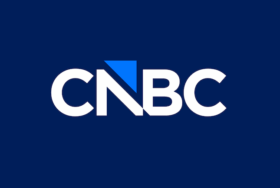
 The manufactured complexity of CTV Is rigging the game against publishers, contends Scott Ryan, founder and CEO at revenue operations platform TVIQ. Ryan outlines the problem – and offers a solution.
The manufactured complexity of CTV Is rigging the game against publishers, contends Scott Ryan, founder and CEO at revenue operations platform TVIQ. Ryan outlines the problem – and offers a solution.
In CTV, it’s becoming standard practice for OEMs and streamers to take a significant share of publisher inventory. What impact does that have on how impressions are valued and sold?
The impact is significant on everyone participating in the industry. Two different ad stacks selling the same inventory, with no control or visibility into how the other seller is packaging and pricing inventory, along with messiness in how the supply chain is understood via tools like ads.txt and sellers.json page, all makes for a world where buyers can see the inventory at different prices, with different data in the bidstream, from different supply paths – all of which may be valid. Basically, it’s like asking a small seller to give half their inventory to Costco and then making them set up outside Costco to sell, but not letting them inside to see how their products are sold.
Data access is becoming one of the most powerful levers in CTV. How does limited access to bidstream signals put publishers at a disadvantage?
The bidstream is the lifeblood of the publisher; it is how they demonstrate value to buyers. The bidstream tells the story of the impression, and when publishers are limited in their ability to pass signals in the bid request, it serves no purpose other than to devalue their inventory. Bidstream data is the key that unlocks ad spend, and if parts of the key are stripped away, the door to revenue stays closed.
The industry has multiple definitions of “direct,” “addressable,” and “quality.” How do these competing definitions shape who wins and loses in the current ecosystem?
Qualitative valuations serve no purpose other than to bias ad spend towards the largest players in the industry. Direct doesn’t mean quality, quality doesn’t mean direct, and addressable is really a function of any digital impression. The largest platforms can throw these words around, and often do, as a means to signal that they are where ad dollars should land – but that doesn’t mean they land in the hands of publishers. It simply means they’re leveraging the value publishers create through their content to attract more ad dollars into their own share of the inventory.
From an advertiser’s perspective, the CTV supply chain can look opaque and unreliable. How does that perception end up reinforcing platform dominance?
This perception, driven by the largest buying platforms in the world, is really an example of circular reasoning. Claiming the supply chain is opaque, and then limiting the data in the supply chain or limiting the ability for publishers to declare multiple transactions as their own, makes the supply chain opaque to those buyers, who then feel empowered to collapse the supply chain in favor of their own supply chain. They take advantage of a complicated ecosystem, an imperfect methodology for declaring parts of the supply chain (why won’t all streamers even give their channel partners an inventorypartnerdomain ads.txt line), and then the buy side calls this inefficiency opacity so they can take even more market share for themselves.
Looking ahead, what industry standards or practices would most quickly restore balance between platforms and publishers?
We believe there are a few very important steps that need to be taken. The first is a reset and review of how streamers share inventory with publishers; there needs to be a concerted effort to push power back into the hands of the channel owners.
Next, buyers need to rethink and reframe their strategies and retrain algorithms to stop buying against just scaled pools of inventory, but rather look for small/direct supply.
Finally, there needs to be a broader discussion with publishers about ads.txt best practices so that the supply chain, regardless of the number of participants and hops in the chain, can actually support all of the buyers’ buyers and maximize revenue from their share of the inventory.







